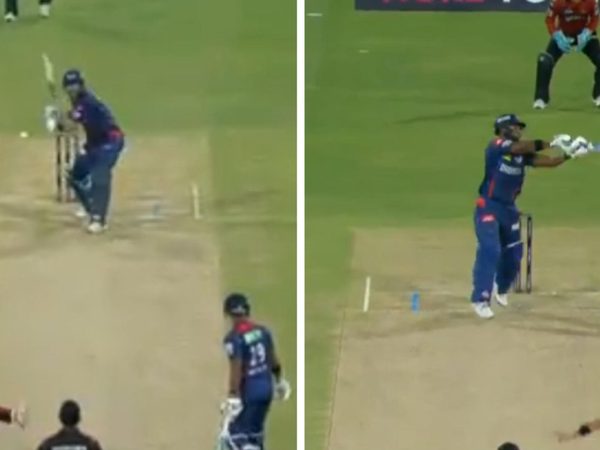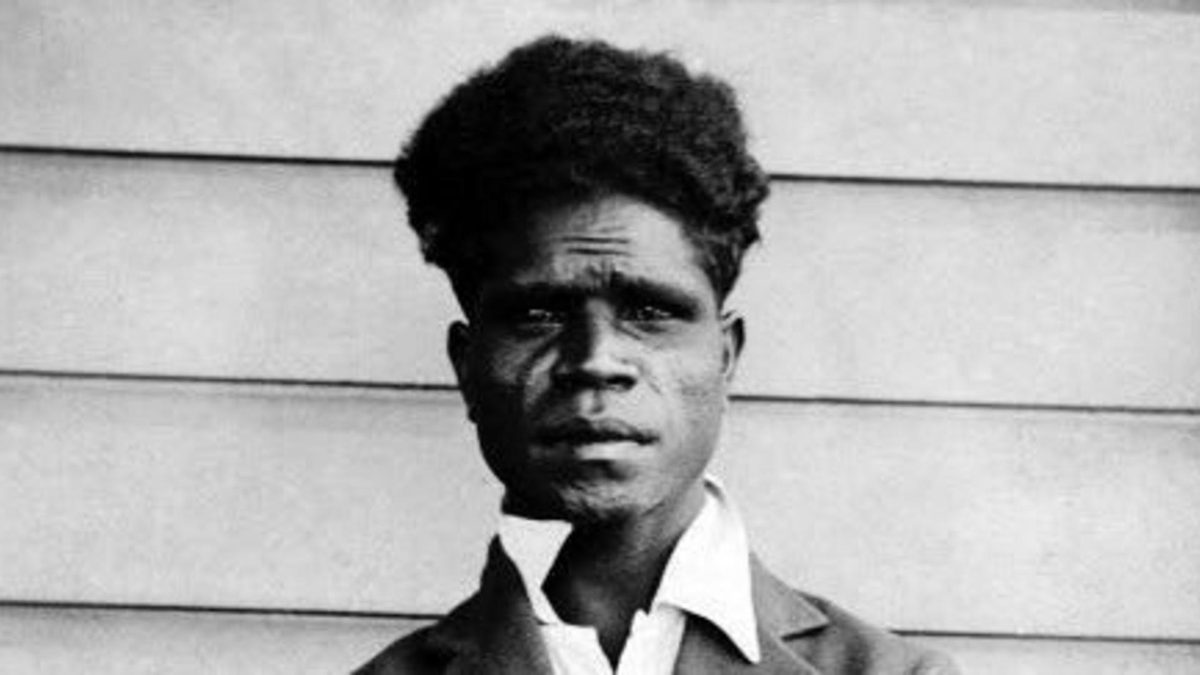
First published in the 2018 edition of the Wisden Cricketers’ Almanack, Geoff Lemon looks at the under-representation of the Indigenous population in Australian cricket.
When you research Aboriginal Australian cricket, you find 1868. Then you keep finding it. You cast around for the next thing, and grasp empty air. But this one story, it tumbles along, a hundred retellings dressed in the same trimmings of novelty. A team from western Victoria who sailed to England and caused a sensation, having done the same at home. The extra narrative sauce that Tom Wills, the lionised founder of Australian Rules football, ran the team for a time.
Here a book, there a thesis, a documentary, surely a feature film to come. Cricket Australia are running a 150th anniversary tour in 2018. Increasingly, there’s a willingness to grasp the story as a foundation myth. But if this is a massif in the subject’s landscape, it ends in a cliff.
Australian cricket is all about whiteness. It’s the glare of sun washing out TV screens. Pitches baked to chalk by January heat. Picket fences and fresh uniforms and smears of zinc across the nose. Blank scorecards and high summer cloud, new Kookaburras for night games. Our Test history is rich in whitewashes, from Armstrong to Johnson, but the history itself is a whitewash.
Scan the list of players to find a barely broken white line, uphill on a highway. A parade of Anglo monikers – Hassett to Bradman to Harvey, Chappell to Walters to Waugh – with the odd O’Reilly or McCool. Through a century and more, only Nitschke, Meuleman and Benaud even cross the Channel. Cricket remains the island of Robert Menzies’s fantasy: “Where Great Britain stands, there stand the people of the entire British world.”
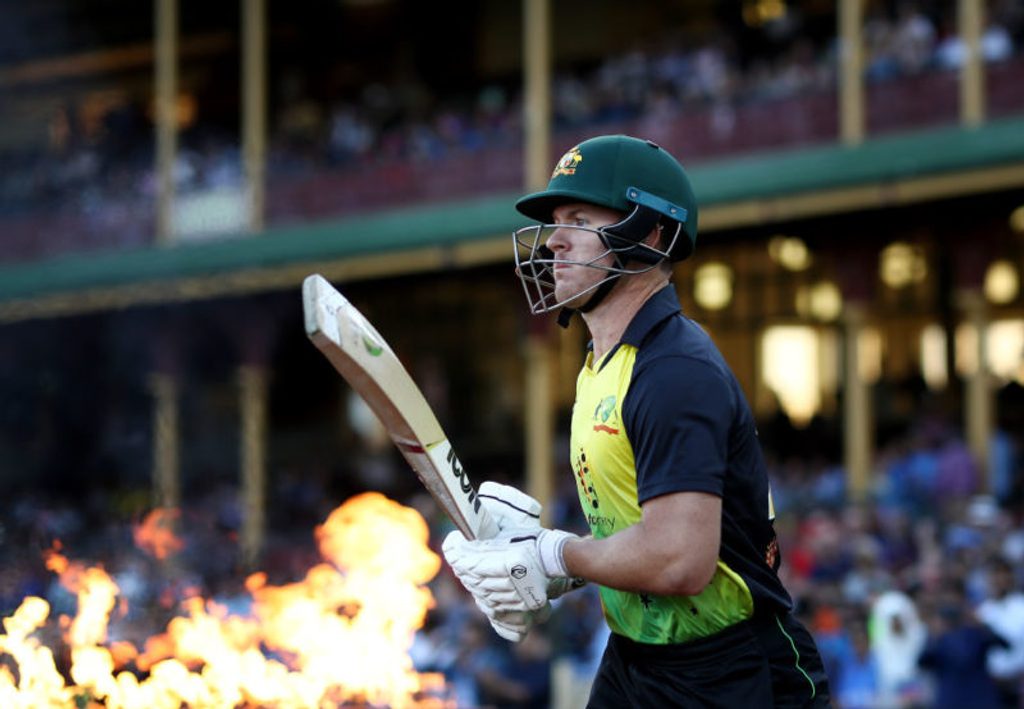 D’Arcy Short is one of very few Aboriginal cricketers to represent Australia
D’Arcy Short is one of very few Aboriginal cricketers to represent Australia
It’s not as if Australia was short on Europeans, even before the post-war flood. They started businesses, invigorated cuisine, and soon came through in football codes. But even domestic cricket took until the 1980s and beyond to include the odd Zoehrer, Noffke, Manou, Clingeleffer, Jaques. From then, we saw Italians and Greeks: Di Venuto, Veletta, Stoinis. Some Slavic names: Katich and Kasprowicz and Krejza. Very recently, Asia: Khawaja, Sandhu, Fawad.
But compared with Aussie Rules, elite cricket has never had a Wirrpanda or Cockatoo or Wanganeen. Of course colonialism left most Indigenous footballers with settler names, but traditional ones signalled the normality of Indigenous presence. A teamsheet in the newspaper became political affirmation. Cricket, conversely, has a great absence. A silence. Which tallies with so much other Indigenous experience, being removed from the reckoning, from families, from land, from being counted. Terra nullius, reinstated time and again.
So here we are: ten years on from Federal Parliament’s apology to the Stolen Generations, 150 from that England tour, and a proud and excited Indigenous team set to retrace it. This, at the end of a season where half a dozen Indigenous players were making their way professionally; where an Aboriginal batsman from Darwin named D’Arcy Short hit the Big Bash League from what seemed like nowhere to be the sensation of the summer.
In 2015, the Australian National University delivered For the Love of the Game, an independent report commissioned by CA on cricket’s relationship with Indigenous people. Its conclusions were brutal, and have changed the sport’s administration.
At the same time, Australia remains a country where columnists with byline photos supposed to convey gravitas still write that Aboriginal people should be grateful for being hauled out of the Stone Age. Grateful for dispossession, the loss of so many lives, of histories and languages, as though these can be assessed as a trade for the electric toothbrush. Being honest about this history, and the advantage we migrants derive from it daily, draws accusations of negativity. Let go of the past, people say, then demand respect for the 100-year dead of Gallipoli.
A vocabulary note for unfamiliar readers: “Indigenous” is the broad term including mainland Aboriginal people and Islanders from the Torres Strait, which lies between Australia and New Guinea. Within those categories are hundreds of nations, tribes and language groups across the breadth of an enormous country. That country is now deeply multicultural, while wrestling with racism like an aberrant subconscious.
Yet its fractious relationship with each new migrant group is managed better and settled sooner than its inability to reconcile with Indigenous Australians. Case in point: when invited to write this piece, I thought someone else should take the space. But while I looked and asked and wrote around, I couldn’t find a cricket writer who publicly identifies as Indigenous.
“Aboriginal people have not been in charge of the stories other people tell about us,” says Alexis Wright in Meanjin, an Australian literary journal. “It would be fair to say that we are the country’s troubling conscience, and managed by its most powerful power brokers through a national narrative. I saw the fallout of this changing negative narrative in our communities, and in the lifetime of hard work our people do to fight against each political storymaking trend.”
Here is a sport that has so efficiently excluded a people that we can’t find a voice to tell of that exclusion. So round we go again, another white reflection on black experience. Acknowledging it doesn’t make the problem go away. But the problem is part of cricket’s legacy.
***
Archives suggest Indigenous involvement with cricket as early as 1795, and matches are fully recorded by the 1850s. Livestock stations were nuclei. The 1880s New Norcia team would walk 80 miles into Perth to thrash white city sides. The 1868 players were mostly Jardwadjali men from three stations. They had toured Victoria and New South Wales in 1866-67, and would have seen England a year earlier had their white manager not embezzled profits.
When CA say they will “commemorate 150 years since an Aboriginal XI toured the UK”, it makes that long-ago team sound official. We marvel at the players’ feats, especially of Unaarrimin (Johnny Mullagh). But while the tour was voluntary, compulsion surely played a part once it was under way: matches squeezed back to back, 99 days in the field out of 125, Unaarrimin’s absurd tally of 1,877 overs in 43 games. These weren’t players sitting out with tightness in the quad. One died and two were sent home sick; as a result of the 1866-67 tour, four had died.
Some accounts exaggerate the team’s exploits, a common presentation where Aboriginal ability is exoticised as mystical rather than skilful. You’ll still hear Indigenous AFL players described as “magic” far more than the average. But nor were the tourists a sideshow: historian Anthony Condon’s research suggests several matched the contemporary standard of first-class cricket, while others were athletically brilliant. The touring party was padded with less adept cricketers, whose job was to entertain: all were given comic English nicknames, and matches were followed with exhibitions of boomerang throwing, whip cracking, and sprinting backwards.
“In many ways, the team represented an oddity from the colonies, a spectacle to be viewed, an entertainment driven by notions of the ‘savage’ cloaked in the trappings of the gentleman’s game,” says the ANU report. “Without the trappings of the novelty provided by Indigenous cultural displays, such a tour would not have been commercially viable. In sum, the 1868 tour – when viewed through such a prism – can be seen as a commodified product of colonisation.” You can bet your vintage Wisden collection nobody Aboriginal got much of the proceeds.
The tour remains a contested historical site. Where some accounts depict it as a rosy chapter in race relations, For the Love of the Game notes that it was “bookended by major massacres of Aboriginal people by pastoralists”, and Victoria passing the Aboriginal Protection Act. For a century to come, Australia’s colonies and Commonwealth asserted control over Indigenous lives. The tour was probably a partial catalyst. The team had left Victoria clandestinely to avoid interception, faking a fishing expedition before sailing to meet a steamer bound for Sydney. Politicians were uneasy about what might transpire in England beyond their control, and the cricketers were mentioned in parliamentary debate. Welfare was the excuse for curtailing movement but, with depredations unchecked in a rapidly expanding colony, it was surely more about concealing violence.
“The signing of the Act virtually ended Indigenous participation in cricket in Victoria, as similar acts would in other colonies,” writes Condon in a forthcoming essay for The International Journal of the History of Sport. “Some notable exceptions played first-class cricket… However, they never became full members of the team, and required permission to be able to travel with other team members. This was a story repeated across Australia until the restrictive laws governing the lives of Aboriginal people were removed in the 1960s and ’70s.”
Those exceptions were few. Of the UK tourists, Murrumgunarrimin (as Twopenny) played once for New South Wales, Unaarrimin once for Victoria. After that, 100 years saw three names: Albert Henry and Jack Marsh between 1900 and 1905, even dismissing each other when Henry made his first-class debut for Queensland against New South Wales; and Eddie Gilbert [pictured at the top of the article] in the 1930s. All three were properly fast, enough to impress the luminaries of their day. All had idiosyncratic actions. All excelled in a handful of state matches before being no-balled out of the game. No wonder there were echoes of something other than the Laws of Cricket when Darrell Hair and Ross Emerson stretched out an arm to Muttiah Muralitharan.
Murali had the last laugh on his detractors, a chuckle 800 wickets high. Marsh was bashed to death outside a pub aged 42. Henry was exiled to a mission a thousand miles from his home, and died of tuberculosis at 29. Gilbert spent his last three decades in a psychiatric ward.
And so the great whiteness set in. Faith Thomas played one Test in 1958, in an era when administrators regarded women’s cricket as an embarrassment. Ian King bowled a domestic season for Queensland in 1969-70. As his career was ending, so were the laws that created the Stolen Generations, the Indigenous children taken from families by government agencies to be assimilated into white society.
For the current Australian all-rounder Dan Christian, this is more than an episode in a history book. “Dad’s side of the family have all been very vocal and active in the Aboriginal community,” he says. “He’s mellowed now, but he was always pretty passionate as a young bloke about standing up for Aboriginal rights. He went through… I wouldn’t say a rough childhood, but he had times when the welfare officers would come, and him and his brothers and sisters would have to run off and hide in the bush so they wouldn’t take them away. It was pretty heavy stuff for a kid.”
Michael Mainhardt played six scattered games for Queensland in the 1980s. Jason Gillespie was almost a double take. He first played for Australia in 1996, but his heritage didn’t come up until 2000. “What did people expect me to do once I started playing for Australia?” he wrote later. “Call a press conference and announce I am an Aboriginal?” That he was already established in the team defused any hype. The milestone had slipped by.
That the milestone took until the turn of the millennium only emphasises the empty decades before. Evonne Goolagong won seven tennis Grand Slam singles titles, Lionel Rose was a world boxing champion, Cathy Freeman took Olympic gold in the 400m and ran her lap of honour flying the Aboriginal flag.
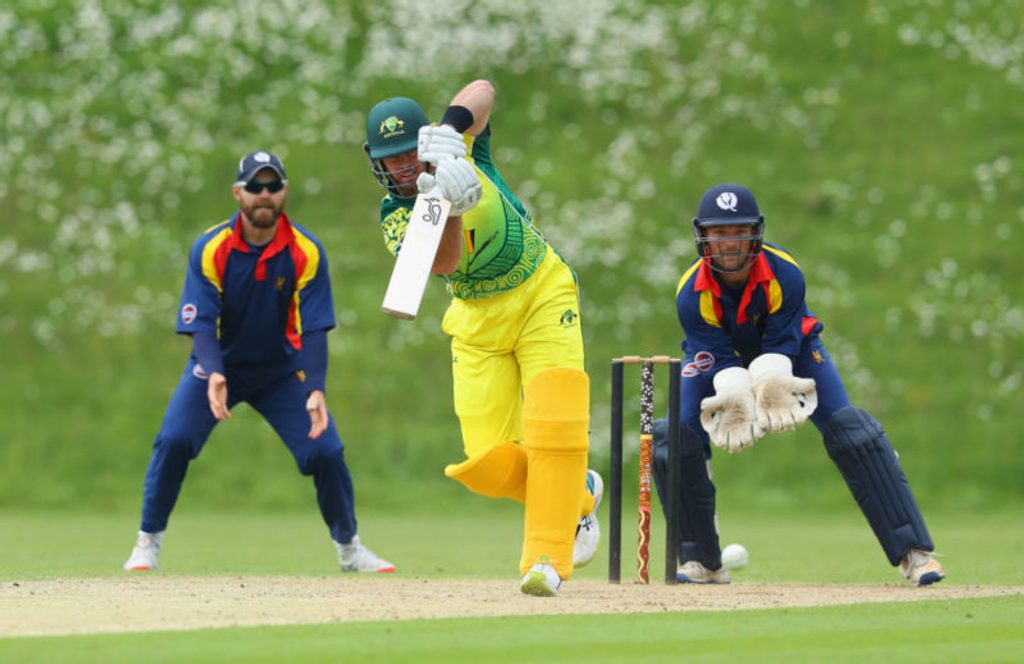 Dan Christian batting for an Aboriginal XI against MCC in 2018
Dan Christian batting for an Aboriginal XI against MCC in 2018
The National Rugby League and AFL were rich with Indigenous players, from trailblazers in the 1900s to stars by the 1980s. The 1993 on-field image of Nicky Winmar pulling up his jumper and pointing to the colour of his skin forced a largely effective AFL push against racial abuse. By 2009, AFL numbers peaked with 82 Indigenous players out of about 600. In 2017-18 came the second AFL Women’s season and the third Women’s Big Bash: football had 11 Indigenous players, cricket one.
There are plenty of hypotheses about why football codes have flourished among Indigenous Australians. Those about cricket needing space or expensive equipment don’t account for the street games of India and Pakistan. Perhaps football welcomed rebels, and cricket was the Establishment: the 1972 Illustrated History of Australian Cricket had a foreword by Menzies, and omitted the 1868 tour entirely. Whatever the initial cause of connection or disconnection, representation soon becomes circular.
John Blurton was New Norcia’s star in the 1880s, and his great-grandson John McGuire played first grade in Perth a century later. “Let’s be honest about it, cricket hasn’t been a game for all Australians,” McGuire told ESPNcricinfo. “Aboriginals think cricket is a whitefella’s sport, because we don’t see black players in the team.” McGuire’s youthful affection went to West Indies.
It all tallies with Test batsman Usman Khawaja’s memoir for the PlayersVoice website, where he recalls racial abuse from opponents and parents in primary school. He and his Asian friends supported “West Indies, Pakistan, India, Sri Lanka. Anyone else… Everything that was going on in our childhood and around us built up this resentment of the Australian cricket team. I mean, none of them looked like us… By high school I was a diehard Australian team supporter. But the damage had been done… it’s no surprise it has taken Australian cricket so long for coloured players to come through the system.”
As McGuire told the Guardian: “There wasn’t a match I wasn’t racially abused in when I went out to bat.” Even as his race held him back, white cricketers called him a coconut: black on the outside, white on the inside. “That’s one of the worst things you can say to an Aboriginal, but I was called much worse. I was called a black cunt so many times.”
Less blunt racism, he said, existed at higher levels. “Cricket has this unfortunate trait: cultural bias sits there, and it’s unconscious.” The numbers support him: of 24 Perth batsmen who topped 7,000 grade runs, one never played for Western Australia. No prizes for guessing who. McGuire now sits on CA’s National Indigenous Cricket Advisory Committee. But tensions remain. The Western Australian Cricket Association refused to comment for the Guardian piece. And when McGuire was quoted in another outlet last year, a WACA official telephoned to berate the writer, calling McGuirean “extremist”. It’s a familiar appellation for anyone protesting against racial injustice.
***
Gillespie’s ascent didn’t open the floodgates, which probably added to the frustration that unfairly spilled in his direction. “I’ve known since I was a young kid that our family was of Aboriginal heritage,” he told The Final Word podcast in 2017. “It’s obviously something we’re incredibly proud of. There was a bit of criticism in some quarters that I wasn’t embracing my culture, which couldn’t be further from the truth. My late father was CEO of the Aboriginal Legal Rights Movement for a long time; my brother still works there. Our family’s got a strong connection.”
His era saw the first state advisory committees and diversity officers, but they were under-resourced and ineffective. Gillespie retired in 2008, passing the torch to Christian, who has played limited-overs formats for Australia and hovered near Test selection. There was plenty of talk of inclusion – and little progress.
The 2015 ANU report was the watershed: “It is evident that the damage resulting from a legacy of exclusion, racism and disastrous public policy by government, particularly during the period between the late 1890s and the 1950s, has been instrumental in the causation of a disconnect between cricket and the wider Indigenous community.
“This has been compounded by poor practices and ignorance at many club and district levels when it comes to providing an open, welcoming and safe space for Indigenous engagement to occur… We all need to ensure that this is not replicated in the eras that stretch in front of us.”
Bluntness was met with willingness. All the major recommendations were instituted, and the new national committee given clearer authority and direction. Specialist Indigenous officers were recruited, rather than having generalists fail at combined portfolios. In short, CA got serious, as they have about women’s cricket.
Paul Stewart is the head of their Indigenous programme, and speaks enthusiastically about helping teenagers with schooling, and spreading the game as broadly as he can. “We know where Indigenous people live in the regions we’re in, and we’re making sure we’re not just going to the schools that might have been an easy choice. We’re getting out to remote communities and taking cricket to them. It’s not a day trip.”
There’s also the false impression that all Indigenous communities are remote. “It’s just perceived, maybe what people see on TV. We’ve got a coined phrase: I’m a city black. Australian Bureau of Statistics data says there’s a significant amount of Aboriginal people living in the city.”
The Imparja Cup, contested by teams of Indigenous cricketers, has gone from a local Alice Springs knockabout to the marquee event of the year, and many have responded. “They grew up with not many Indigenous players taking part,” says Short, “and suddenly there’s five or six of us playing state level cricket. They get a pride and sense of enjoyment in seeing other Indigenous players as well, and coming together in a tournament is always good for us. It’s a sense of self-pride in the community.”
In the last couple of years, Scott Boland has broken through for 17 internationals as a death-overs seamer, Short has made Australia’s T20 side as a power-hitting opener, and Ashleigh Gardner has flipped between off-spin for Australia and smoking sixes in the WBBL. Brendan Doggett and Carly Fuller are making their way for Queensland, and Josh Lalor for New South Wales, while Hannah Darlington was a development signing for Sydney Thunder.
They are all of partial Indigenous descent, which two of them raise in interview. On racial abuse, Short says: “I don’t get it as much as a lot of others – obviously because of my skin colour not being the same – but definitely when I was younger I got a bit.”
Christian echoes him: “I’m fair-skinned, so I never had to deal with anything particularly discriminatory. You come across a lot of casual racism, as a kid and even now. There are kids and cousins I grew up with who were subjected to that sort of racism, and missed out on opportunities they otherwise could have gotten.”
McGuire, dark in complexion, supports those players, but makes an additional point. “It’s easier to pick a white-skinned Aboriginal person because they fit in,” he said to ESPNcricinfo. Later, in The Nightwatchman: “The Aboriginal guys that have been in the teams look white, unless they say they’re Aboriginal. A kid in Hermannsburg is not going to know they’re blackfellas. They are great guys, but I want to see a black Aboriginal playing cricket. Then there will have been real change.”
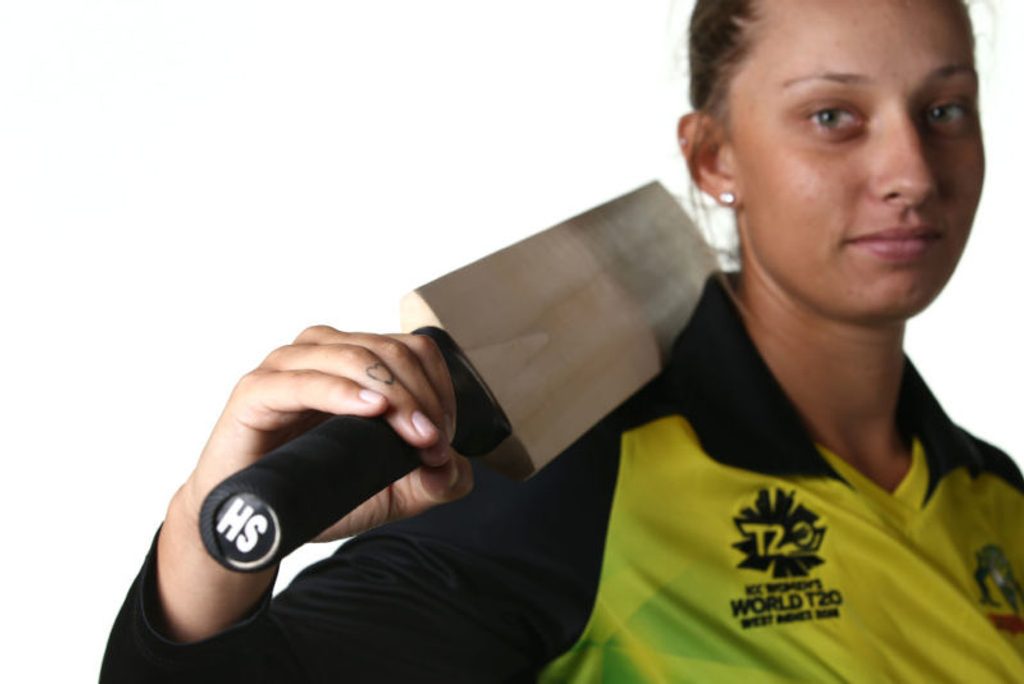 Ashleigh Gardner captained an Aboriginal XI women’s side on the 2018 tour of England
Ashleigh Gardner captained an Aboriginal XI women’s side on the 2018 tour of England
It’s a deeply complex subject, with the potential for hurt. A favourite strand of Australian racism, next to abusing those deemed Indigenous, is the abuse and denial of identity of those deemed not Indigenous enough. Efficient racists can even double-dip. Sections of white Australia seem obsessed with arbitrating Indigenous identity, effectively writing fractions on slips of paper to pin to people’s shirts.
This is based on the narrow conception of what a white society thinks Indigenous people are supposed to look like. Aboriginal academic Anita Heiss named her memoir Am I Black Enough For You? Actors Nakkiah Lui and Miranda Tapsell host a podcast called Pretty For An Aboriginal. In one episode, the rapper Briggs pursues the issue: “I’ve got cousins with red hair, who look super white. I’ve got another cousin who’s as black as Wesley Snipes. You put us three in a room and you might not even know that we’re related. But we’re all family.” Lui responds: “My mum calls them crayons. Different group of blackfellas in a room: box of Crayolas.”
Paul Stewart says: “I’m as fair as Dan Christian, but Dan’s a Wiradjuri man and I’m a Taungurong man, and this is what we do in the Imparja Cup. We write our club against the fixture, and we write who our mob is, our date of birth, whether we’re a left-hand bat or a right-arm off-spinner.”
Christian elaborates. “I grew up part of an Aboriginal family and Aboriginal culture. My dad’s one of nine – huge family – so I’ve got lots of cousins and very close second cousins. I loved my upbringing, and it’s nice to be able to represent them now as I’ve gotten older.”
Short has experienced “people saying I wasn’t Aboriginal. But that’s just out of people being idiots, or maybe a bit of jealousy in terms of where I was with my cricket.” There are grimmer historical undertones, though: the 1937 Commonwealth State conference concluded that “the destiny of natives of aboriginal origin, but not of the full blood, lies in ultimate absorption”. Short is part of a movement that rejects this, embracing and amplifying his descent.
While McGuire’s point could be twisted into an attack, it reflects the need for breadth in representation. In another episode of Pretty For An Aboriginal, (white) actor Yael Stone explains it in terms of the series Orange is the New Black, hailed for its nuanced depiction of inmates in a women’s prison. “Once you have more than one person of colour, there’s a reason to go into deeper complexity of characters, and have interactions that are multilayered. I walk around the streets of New York, and that’s what the streets of New York look like. For a long time we’ve had a very strange popular culture reflection back at us. Maybe, for a lot of white people, we say: ‘Oh yeah, that’s my life, that feels accurate – cool, cool, cool.’ But for anyone else, it’s like a weird fairytale that’s not recognisable, that you can’t connect with. Even if you’re not insulted by it, it’s completely isolating.”
***
With CA’s reform, that sort of representation may be possible. “It’s a step in the right direction, let’s put it that way,” says Christian. “I think it’s a long, long way from a finished product.” The same is true in a broader social sense. Personal abuse is one thing, systemic discrimination another: barriers of economy and access, time and transport, perception and safety and encouragement.
This is still a country whose national celebration is January 26, the anniversary of colonisation. It’s a country suspicious of accountability, lashing out when told of problems. Aboriginal AFL champion Adam Goodes spoke about racial inequality late in his career, and spent his final season being booed around the country. On Australia Day in 2018, politicians raged against a young Aboriginal activist, Tarneen Onus-Williams, for rhetorical fire in a speech, while media outlets made her a target on front pages and bulletins, knowing threats and abuse would follow.
It’s also a country where tens of thousands marched in protest; a country where Briggs had a hit with the scathing track “January 26”. Appetite for progress is undiminished. Onus-Williams said she hoped Australia burns to the ground. “It was a metaphor,” was her weary explanation. “I just want everything, all the governments, to fall apart, because our people are dying and nobody cares and the whole system needs to change.”
That’s not hyperbole. Indigenous Australians are disadvantaged on every conceivable measure: life expectancy, health, income, employment; more arrests, jail time, deaths in custody, suicide, institutional abuse. In 2018, Melbourne’s Age newspaper was still saying “the greatest failing of Australia, one of the most prosperous nations, is the gulf between the situation of Aboriginal and Torres Strait Islander people and that of the rest of the population”. The same day, online clips of Olympic ice skater Harley Windsor were trolled with slurs: he was both Aboriginal and not Aboriginal enough.
Problems this big can be addressed only by a million small actions. Cricket can be part of it. Asked what he hopes the future holds, Short says: “I’d like to see that it’s just the norm having Indigenous people picked in Australian sides, all the time. It would still be a massive thing, but not like ‘He’s the third or fourth to be playing for Australia.’”
For Christian: “I’d like there to be more than five guys playing first-class cricket with Aboriginal heritage. I’d love to see a full Indigenous round next year, like we see in the AFL and NRL. To have an Indigenous squad that’s together for a lot of the year, and can go on tours and play against state teams, and make it a viable goal for kids growing up and coming through. Something you aspire to – to grow up and play for the National Indigenous team.”
Next, that team tour England in June. Even for those who see symbolism as toothless, and even if the pace is glacial, it’s some kind of movement. Far from the dubious aspects of 1868, this team will visit in a completely different way, respected from the outset, and clear in what they represent. There’s reason to hope that this time it’s the start of something, not the end.
Geoff Lemon is an Australian writer and broadcaster, on cricket and otherwise.
The Wisden Cricketers’ Almanack 2018 is the 155th edition of ‘the bible of cricket’. Order your copy now.
Visit the Long Room for more long reads and features.


